The Cammus C5 Bundle in a nutshell
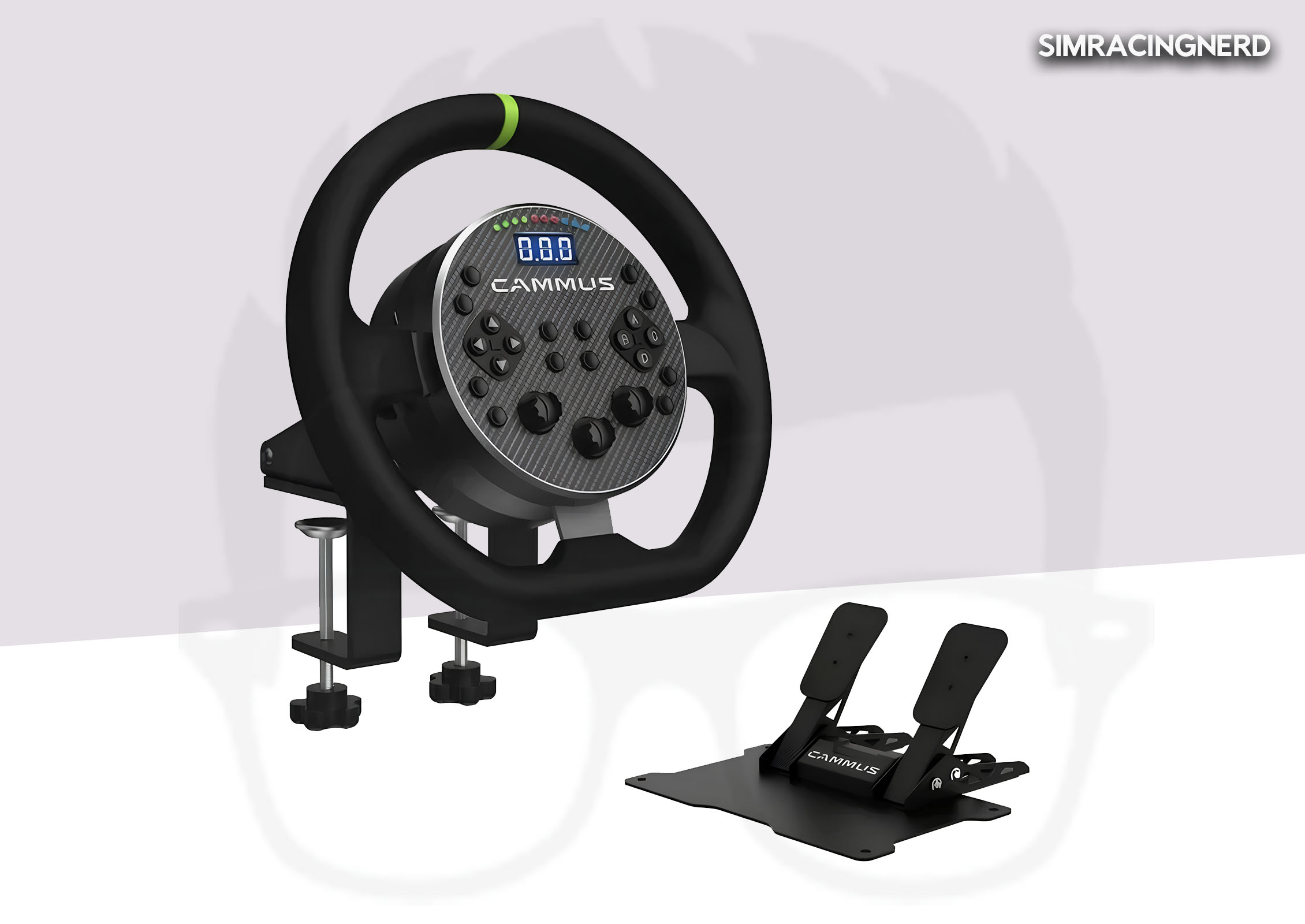
Advantages & Disadvantages
✅ Competitive price in the segment
✅ 5 nm of torque in constant
✅ LED display, RevLED and controls on the steering wheel faceplate
❌ Design that won’t please everyone
Today’s sim-racing market includes many brands active in different segments. These include names like Logitech, which covers the entry-level segment with its G923, as well as the premium segment with its recent G Pro. As for Thrustmaster, it focuses on the entry- and mid-range, with products that deliver pretty good performance for the price. And, of course, we have premium players like Fanatec, Simagic, Simucube and others.
The sim-racing market is an amalgam of brands, much to the delight of racers and other fans of racing on the small screen. If you’re a fan of virtual driving, you’re probably familiar with the brands I’ve just mentioned. But what about Cammus? Like the F-22 Raptor and its stealth technology, Cammus has been flying under the radar in sim-racing ever since its creation a few years ago. In France, few people know about this brand for various reasons, not least its distribution.
Nonetheless, this manufacturer of sim-racing products offers an inexpensive and rather high-performance range, in order to make a small place for itself on the world market for racing peripherals. In what follows, I’ll introduce you to the C5, an entry-level bundle that aims to compete with Logitech and Thrustmaster at the same price.
Main and technical features of the bundle
- Flywheel-mounted motor delivering 5 nm of constant torque
- Bundle including flywheel with motor, crankset and mounting clamp with integrated cooling system
- Leather-like steering wheel with flat bottom
- Aluminum faceplate with around 20 controls, including 3 encoders and 2 small rear-mounted paddles
- Carbon fiber finish on faceplate
- PC-compatible
Cammus C5 design
The Cammus C5 takes up the brand’s rather bizarre, and certainly atypical, styling code. Instead of having a steering wheel attached to a base box, the C5 integrates the electric motor directly into the rear of the wheel. The reason is simple: to cut costs, and it works.
Design-wise, it’s unique. The steering wheel is very similar to those used on Mini cars, with a large, round faceplate. On the latter, the faceplate, we have a carbon-fiber-style skin, with all the wheel’s controls, including a RevLED and a small screen.
The crankset is simple, with a plate housing 2 pedals and the brand logo in the middle.
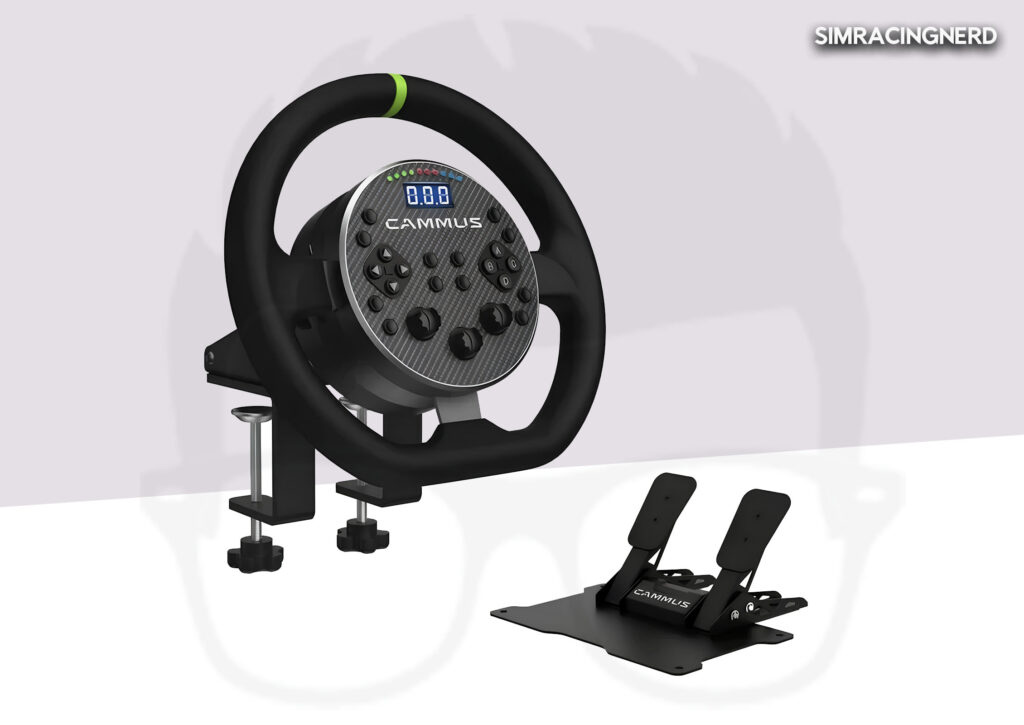
Customized assembly
This bundle includes a clamp for attaching the steering wheel to furniture such as a table or desk. The mounting system is very simple, comprising 2 large screws on the underside. Mounting the flywheel is simple, as it fits directly onto the clamp, and the latter incorporates a fan to cool the motor and electronics.
For the crankset, there are mounting points (holes) on the plate, and you can mount it on virtually any sim-racing set-up. It can also be used on the ground, as this pedalboard has no LC.
Manufacturing and finishing
The C5’s steering wheel uses an aluminum structure to give it rigidity and a premium touch too. And around the steering wheel, Cammus has used a leather-like material with topstitching. However, the finish on the latter element isn’t up to the competition, and we can see that virtually all the budget went on the DD engine. And understandably so.
On the faceplate, there’s a carbon-fiber skin that attempts to enhance the quality aspect of the product, but nothing more. It’s budget-friendly, and you’ll find the same on the bundle’s pedalboard, which is basic: a metal plate with 2 pedals mounted on it. The finish is decent for an entry-level bundle, much better than that of a Thrustmaster T248, for example. This is, of course, an objective opinion.
Getting started with the bundle
Once your hands are on the C5’s steering wheel, you’ll immediately notice that the faceplate (the central part of the steering wheel) is huge, covering virtually the entire center of the wheel. Visually, it’s unique. And ergonomically, it works rather well. All the buttons and other controls are scattered across the faceplate, making them easily accessible in the middle of a race.
At the rear, we’re faced with the smallest paddles I’ve ever seen on a sim-racing steering wheel. The C5’s paddles are tiny, and it’s easy to think they’ll be hard to use. But that’s not the case. Their position is easy to grasp, despite their very small size, and they get the job done. Given the segment, don’t expect magnetic sensors: they’re just basic paddles.
As far as the pedals are concerned, no adjustments are possible on this device. The 2 pedals are equipped with a very low spring resistance system, and work like an accelerator pedal: very smooth.
Sensations during play
The pedals
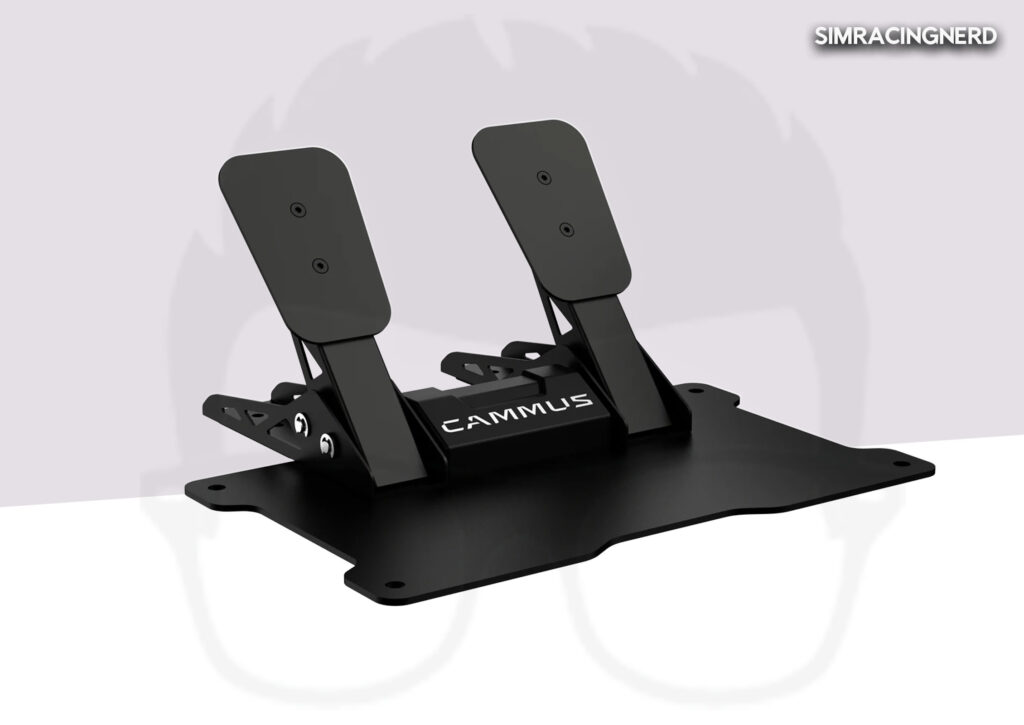
The Cammus C5’s pedal assembly is quite ordinary for the price of the bundle. There are 2 identical pedals (gas pedal and brake), with a potentiometer input recording system. Interpolation of pedal travel to acceleration or braking percentage is correct for a simple system.
The feel of the pedals is linear, with no jerking or catching elements. The 2 pedals are smooth, with virtually no resistance underfoot. As I said above, this is a simple pedalboard, as the C5 is a competitor to the Logitech G923 and Thrustmaster T248.
The base/glider
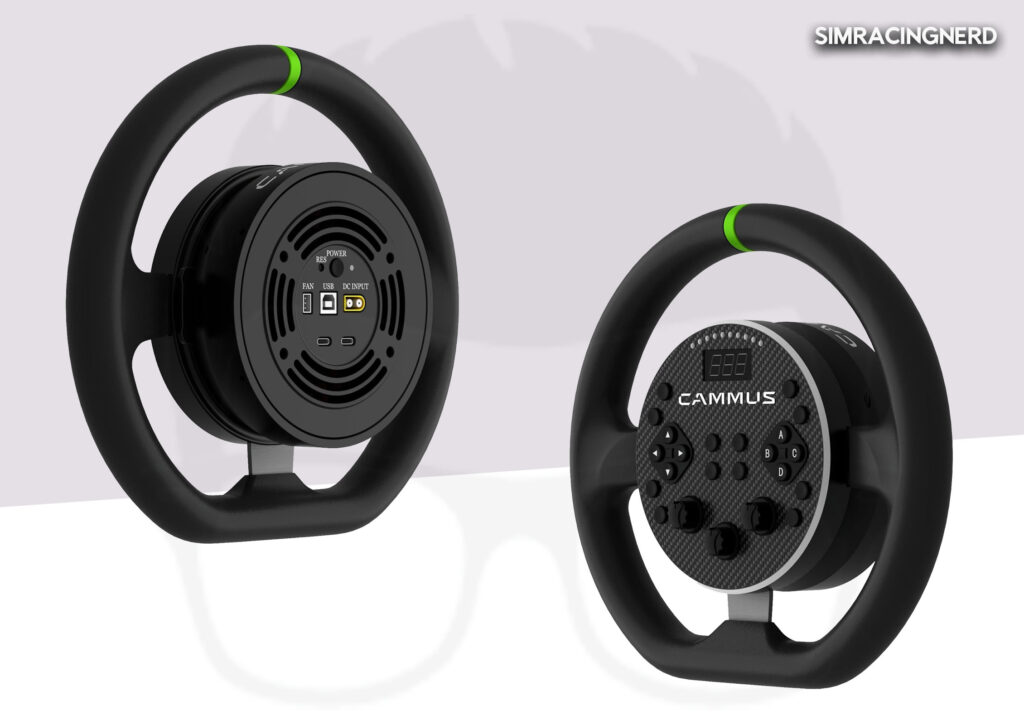
The base/wheel combo is certainly atypical, with the motor located at the rear of the wheel, hence the exaggerated shape of the faceplate. But in terms of feel, it’s clearly better than a G923 or a T248.
The DD motor is quite powerful with its 5 nm of torque, responsive and rather fine in its reproduction of details and effects. Is the C5 comparable to a CSL DD? Of course not, and far from it.
As far as the feeling is concerned, you won’t have too much trouble getting used to it in the middle of a race. However, there’s no real software for setting this base. Well, there is, but it’s not yet perfected, so you’ll be left with only the settings for the game you’re playing. With AC, ACC, iRacing and others, this isn’t a problem, as the title’s physics engine allows you to fine-tune virtually any setting to your preferences.
Bundle compatibility
This C5 is compatible with the PC platform and all the sim-racing titles you’ll find on it. The company has been present on the sim-racing market for some years now, and it seems that there are no problems with its products and Windows compatibility.
Value for money
As a direct competitor to the G923 and T248, the C5 sells for the same price. On the brand’s website, this bundle is currently on special offer for $260, which gives us around €240. I’d say its value for money is perfect for the opponents the C5 intends to face. It’s not the most premium bundle, but it’s not the cheapest in its category either.
My verdict on the Cammus C5 Bundle
So, my verdict on the Cammus C5. The experience was certainly interesting, to say the least. As far as I’m concerned, the C5 is the perfect candidate for those looking for a cheap bundle (under €300) with a Direct Drive motor, which represents one of the best alternatives to belt- or gear-driven bases.
The feel of a DD base is finer, more precise and, above all, more communicative. You’ll really feel like you’re driving a race car on AC or ACC. Admittedly, the shape and design are atypical, and will take some getting used to. And there’s also the ecosystem element to consider, as Cammus’ isn’t the richest at the moment.
Nevertheless, for a rider on a limited budget who was considering a G923, I’d recommend the C5 instead without the slightest hesitation.

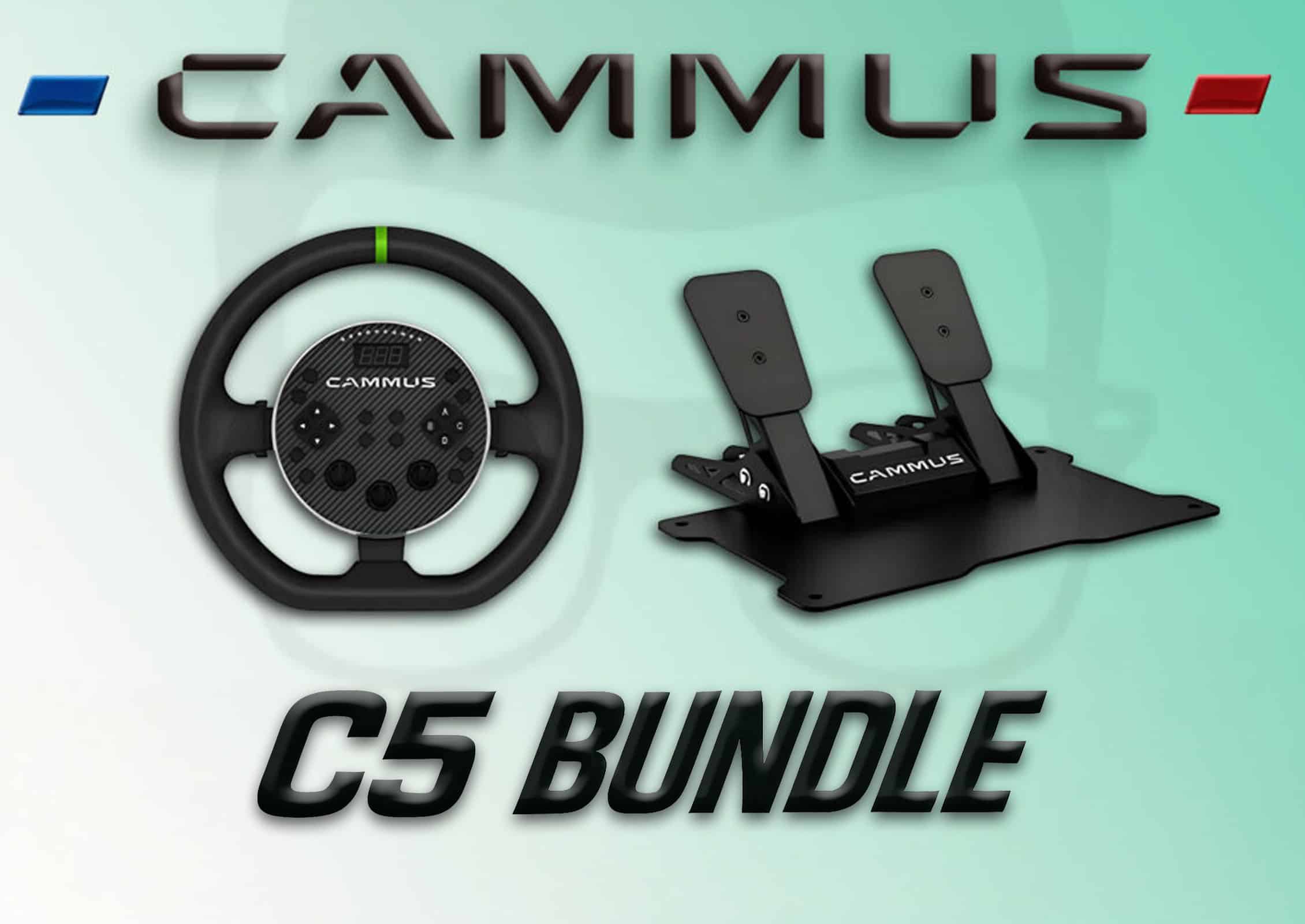
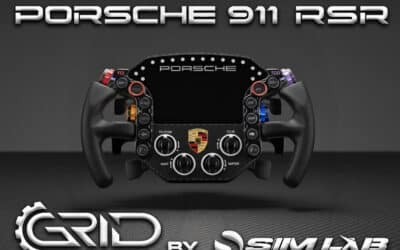
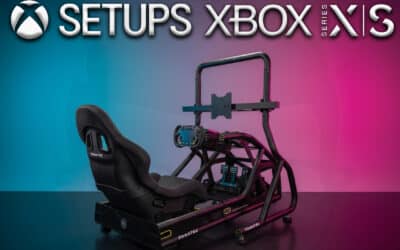


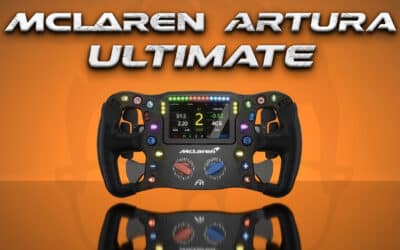

0 Comments